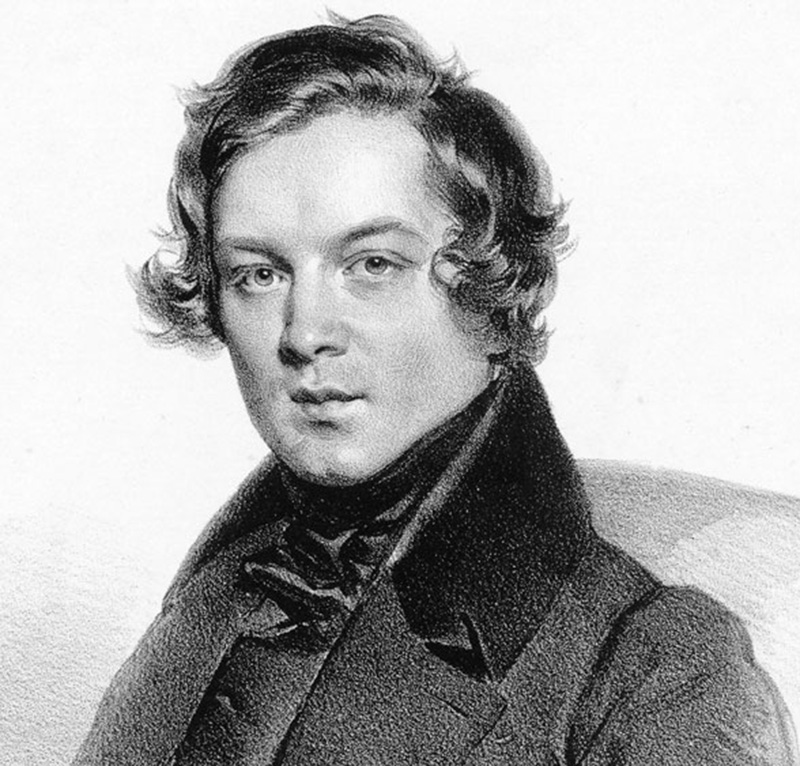Robert Schumann

- Born: June 8, 1810, Zwickau, Germany
- Died: July 29, 1856, Endenich, Germany
String Quartet No. 3 in A Major, Op. 41
- Composed: 1842
- Premiere: January 18, 1848 at the Leipzig Gewandhaus
- Duration: approx. 30 minutes
Nineteenth-century composer Robert Schumann was a sprinter rather than a long-distance runner: he tended to create in brief, concentrated bursts of productivity, energized and fixated on the project at hand. In the year 1842, it was chamber music that possessed him as he produced his Piano Quintet in E-flat, Op. 44, and the Piano Quartet in E-flat, Op. 47. He crafted his three string quartets, Op. 41, over a period of five weeks, dashing off the third over the span of several days. Before setting quill to paper, he had prepared methodically by studying the quartets of Haydn, Mozart and Beethoven, as well as those of lesser-known musicians whose works appeared in Schumann’s reviews in the Neue Zeitschrift für Musik. Once the creative process was finished, he polished the final draft and dedicated the set of three quartets to his friend and colleague Felix Mendelssohn.
From the very first phrase of the third quartet, Mozart and Haydn are already present. The expansiveness and sweeping romanticism of Schumann’s piano works are gone, replaced with an economy of gesture and concision of form. Yet the intentionality and commitment to every line of melody are the unambiguous musical fingerprints of Schumann the Romantic.
The work opens with an undefined tonality, meandering through a progression of chromatic harmonies, briefly settling into the home key of A major before moving on to more remote tonalities. A descending perfect fifth, the two-note “sigh” motive that opens the work, defines the form as the movement progresses, marking the beginning of each of the major sections of Schumann’s sonata-form movement. Two main themes unfold, bridged with sequential passages. A stormy development follows, based on the juxtaposition of the elements that constitute the first theme: the falling fifth motive and the quick eighth-note motive. This same “sigh” motive punctuates the last moment as the falling fifth fully resolves in the cello.
In place of the expected scherzo, the composer substitutes a theme with variations that opens with a rhythmically ambiguous motive. The following variations employ a range of strategies to maintain interest: imitation and counterpoint contrast with lyric chromaticism as the movement evolves, moving into tension and agitation, then into a canon between violin and viola before finally finding peace in the unexpected key of F-sharp major.
The Adagio is the most extended movement of the work. An obsessive rhythmic figure in the second violin moves the movement forward. Angst lies immediately below the surface, only calmed by the reappearance of the first theme. As the movement closes, the voicing of the final chord betrays the uneasiness—assuaged but not fully resolved.
This same rhythmic figure launches the final movement, a rondo form in which several independent sections alternate, rhythmically displaced in a way that keeps the listener off balance. An expansive coda sweeps the quartet to a satisfying conclusion. It is with this rousing finish and the finality of its A-major cadence that Schumann not only crowns his set of string quartets, but has the last word in the genre until his friend, Johannes Brahms writes his own string quartets in 1873.
—Dr. Scot Bozza